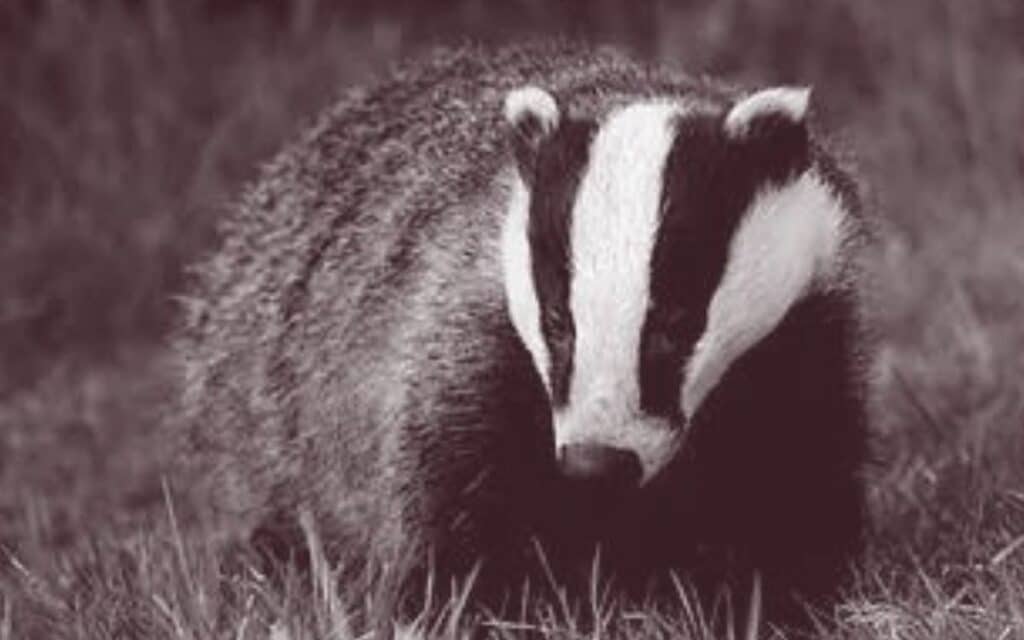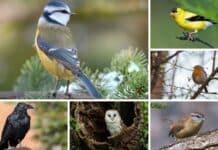Badgers are entrenched in British and Irish Folklore with many believing they have supernatural power, says HELEN JR BRUCE

The badger has captured our attention since ancient times. With its widely recognised striped markings, and impressive size and strength when full grown, this resilient omnivore is an established character in superstition and story.
But do these nocturnal mammals really hold funerals for their dead? And is seeing a badger actually an omen of death?
There is likely to be an element of truth in the folklore around badger funerals.
Badgers are fastidiously tidy and like to keep their underground living chambers clean, which means a decaying relative would need to be dealt with.
Observed behaviours around this include covering the body with bedding and leaves to mask the smell, or even putting an earth ‘plug’ in the affected tunnel to seal it up as a sort of tomb.
Badgers: A Deadly Omen?
In England the traditional name for a badger is ‘Brock’, whereas in Ireland it is called the similar ‘Broch’, although the scientific name is ‘Meles Meles’. Occasionally the badger is also referred to as an ‘Earth Dog’, which perhaps offers some explanation as to why it is considered an omen of death, much like the Black Dog.
Folk belief suggests that a badger passing behind you is a sign of good fortune, but a badger seen crossing the path in front of you may foretell your coming demise.
The key to interpreting this lies in whether or not the badger disturbs any earth with his claws as he passes, with a clean crossing suggesting you may be spared and turned soil meaning that death will soon find you.
Even the call of a badger, a little like the wail of Skriker, can be a deadly omen. A short poem from the early 1800s conveys this warning:
“Should one hear a badger call,
“And then an ullot (owl) cry,
“make thy peace with God, good soul,
“For thou shall shortly die.”
Grisly Spellwork
A mature badger can be 90cm long and weigh up to 12kg, making these creatures the largest land predator in the UK.
Considering this, alongside their formidable strength and digging ability, it is no surprise that they have traditionally been ascribed various magical properties. Their teeth are said to bring good luck to gamblers and the penis bone of a badger was sometimes gifted to newly married couples to encourage fertility.
A strong charm against witchcraft supposedly requires hairs plucked from the head of a fully grown badger, although it notably doesn’t mention if these must be wrestled from the animal while it’s still alive! These hairs are then placed inside a bag made from the skin of a black cat and hung round the neck of the person desiring protection no more than seven days after the new moon.
The brush, or tail, of a fox is noted to possess similar powers of protection, and used to be hung over stable doors to ward off evil.
Fascinatingly, badgers and foxes are notably tolerant of each other, and have even been known to live in interconnected tunnels. These may have been larger badger setts with areas that fell out of use, allowing foxes the opportunity to move in. This is generally of little inconvenience to the badgers, as setts can be up to a hundred years old and possess forty separate entrances
Shapeshifting Badgers
In Irish mythology, badgers are shapeshifters and in human form said to be kinsmen of Tadg, who was foster father to the warrior King Cormac mac Airt. One tale relates how the young Cormac hunted some badgers and brought the meat home for his father, who refused to eat the bloody offering. It was with horror that he learned the badgers had been men in disguise, and would not eat badger ham from that day forward.
As disgusting as it may sound to us now, badger ham was regularly eaten in rural areas of Britain, especially during times of rationing when food was scarce. The hind quarters were smoked and salted to preserve the meat, before being hung up for later use.
Badgers themselves are opportunistic hunters, and although up to 80% of their diet may consist of earthworms, they will also eat fruit and berries and are the main predator of hedgehogs.







